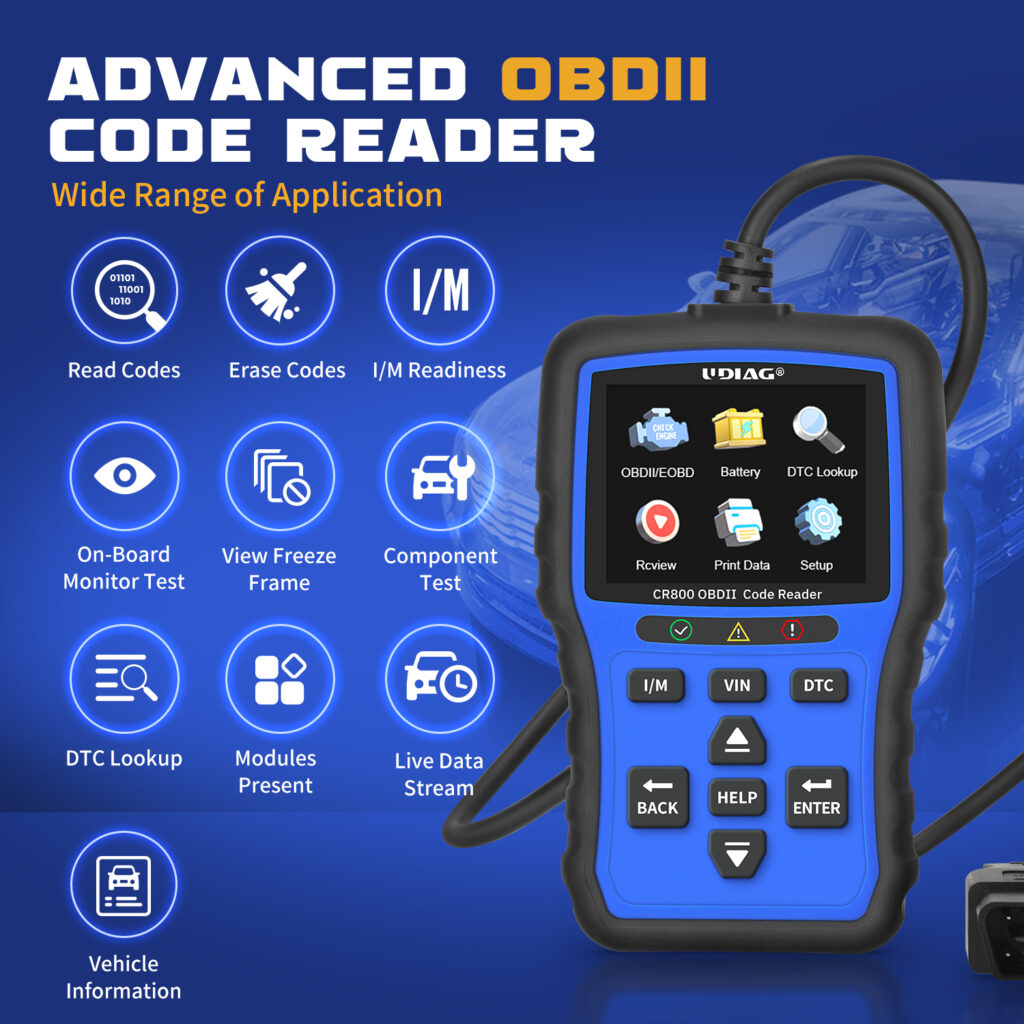What do OBD2 trouble codes look like, and how do I interpret them?
2024-04-15 by UDIAG
In the realm of modern automotive diagnostics, OBD2 trouble codes serve as a crucial means of communication between your vehicle’s onboard systems and a technician or DIY enthusiast. These codes, established under the On-Board Diagnostics II (OBD2) standard, are instrumental in identifying potential issues within the vehicle’s various systems. To truly harness the power of OBD2 trouble codes, it’s essential to comprehend their structure, significance, and interpretation.

I. Introduction to OBD2 Trouble Codes
OBD2, a standardized diagnostic system mandated for vehicles manufactured from the mid-1990s onward, was designed with the primary objective of monitoring emissions-related systems and alerting drivers to potential malfunctions. Central to this system are trouble codes—alphanumeric sequences that pinpoint specific issues within the vehicle.
II. Structure of OBD2 Trouble Codes
OBD2 trouble codes adhere to a specific format governed by standards like SAE J2012. These codes typically begin with a letter indicating the affected system, followed by a series of numbers that provide further detail about the issue. For instance, a “P” code pertains to the powertrain, encompassing components like the engine and transmission, while “C,” “B,” and “U” codes relate to chassis, body, and network issues, respectively.
Consider the example of a common OBD2 trouble code, such as “P0300.” The “P” denotes a powertrain issue, and the subsequent digits—”0300″—specifically indicate a random or multiple cylinder misfire detected.
III. Interpreting OBD2 Trouble Codes
Accessing and interpreting OBD2 trouble codes is a straightforward process with the right tools. Using an OBD2 scanner tool or diagnostic port, users can retrieve these codes, which then require decoding for meaningful analysis.
Deciphering a trouble code involves understanding its components—identifying the affected system (the letter prefix) and grasping the precise nature of the problem (the numeric sequence). Different subcodes within a category can further refine the diagnosis. For instance, variations like “P0301” versus “P0302” signify specific cylinder misfires, aiding in targeted troubleshooting.
IV. Common OBD2 Trouble Codes and Interpretations
A myriad of OBD2 trouble codes exist, each shedding light on distinct vehicle malfunctions. Powertrain (P) codes, such as “P0420” (indicative of catalyst system efficiency below threshold), are among the most prevalent. Chassis (C), body (B), and network (U) codes—like “C0561” (related to ABS system issues) or “U0100” (indicating lost communication with ECM/PCM)—further broaden the diagnostic scope.
V. Diagnostic Steps Based on OBD2 Trouble Codes
Upon retrieving OBD2 trouble codes, a structured diagnostic approach ensues. Prioritizing codes based on severity and urgency, users proceed with comprehensive troubleshooting steps—reviewing code definitions, conducting visual inspections, and performing component tests as warranted. Reference to service manuals or technical resources aids in methodical problem resolution.
Conclusion
Incorporating regular OBD2 scanning into vehicle maintenance routines is paramount for early detection and mitigation of issues. While OBD2 trouble codes offer invaluable insights, seeking professional guidance for complex problems remains advisable. By embracing OBD2 trouble codes as a tool for proactive vehicle care, drivers can navigate automotive diagnostics with confidence and precision, ensuring optimal performance and reliability on the road.
Get Access Now: https://www.udiagtech.com
FAQs
1. What is an OBD2 trouble code?
An OBD2 trouble code is a standardized alphanumeric sequence used by vehicles equipped with On-Board Diagnostics II (OBD2) to indicate specific issues or malfunctions within various systems of the vehicle, such as the engine, transmission, emissions controls, chassis, and more.
2. How do I retrieve OBD2 trouble codes from my vehicle?
OBD2 trouble codes can be retrieved using an OBD2 scanner tool, which connects to the vehicle’s diagnostic port (usually located under the dashboard) and retrieves stored codes from the vehicle’s computer system.
3. What do the letters and numbers in OBD2 trouble codes mean?
The first character of an OBD2 trouble code (e.g., P, C, B, U) indicates the affected system:
- P codes relate to the powertrain (engine and transmission).
- C codes pertain to the chassis (e.g., ABS, suspension).
- B codes refer to the body (e.g., airbags, seat belts).
- U codes involve network communication issues (between various vehicle systems).
- The subsequent numbers in the code provide more specific information about the nature of the problem.
4. What are common OBD2 trouble codes and their meanings?
- Common OBD2 trouble codes include:
- P0300: Random or multiple cylinder misfire detected.
- P0420: Catalyst system efficiency below threshold.
- C0561: ABS system disabled.
- U0100: Lost communication with ECM/PCM.
- Each code corresponds to a specific issue or component malfunction within the vehicle.
5. How do I interpret OBD2 trouble codes?
- Interpretation of OBD2 trouble codes involves:
- Identifying the affected system based on the code prefix (P, C, B, U).
- Understanding the specific problem indicated by the numeric portion of the code.
- Differentiating between subcodes (e.g., P0301 vs. P0302) for more precise diagnosis.
6. What should I do if my vehicle shows an OBD2 trouble code?
- Upon retrieving a trouble code, consider the following steps:
- Refer to code definitions to understand the problem.
- Perform visual inspections of relevant components.
- Conduct diagnostic tests (e.g., checking sensors, actuators) to pinpoint the issue.
- Consult service manuals or seek professional assistance for complex problems.


